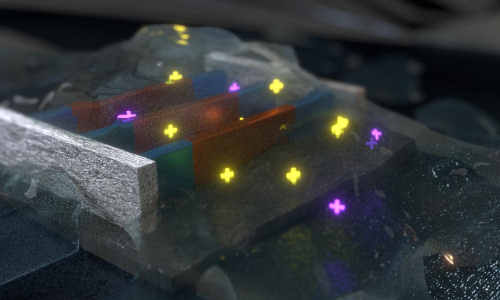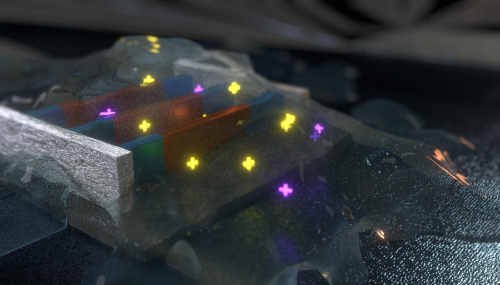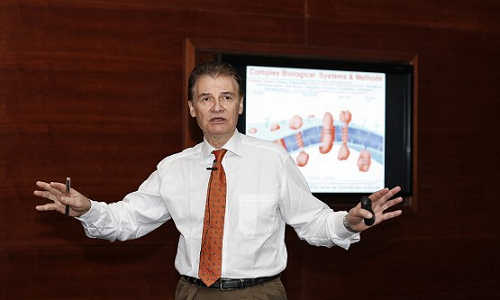Imagine that it is possible, through a tiny adhesive electronic stamp attached to the arm, to know in real time one’s level of hydration, stress or fatigue while jogging. A new sensor developed at the Nanoelectronic Devices Laboratory (Nanolab) at EPFL is the first step toward this application. “The ionic equilibrium in a person’s sweat could provide significant information on the state of his health,” says Adrian Ionescu, director of Nanolab. “Our technology detects the presence of elementary charged particles in ultra-small concentrations such as ions and protons, which reflects not only the pH balance of sweat but also more complex hydration of fatigues states. By an adapted functionalization I can also track different kinds of proteins.”
A two-in-one chip
Published in the journal ACS Nano, the device is based on transistors that are comparable to those used by the company Intel in advanced microprocessors. On the state-of-the-art “FinFET” transistor, researchers fixed a microfluidic channel through which the fluid to be analyzed flows. When the molecules pass, their electrical charge disturbs the sensor, which makes it possible to deduce the fluid’s composition.
The new device doesn’t host only sensors, but also transistors and circuits enabling the amplification of the signals – a significant innovation. The feat relies on a layered design that isolates the electronic part from the liquid substance. “Usually it is necessary to use separately a sensor for detection and a circuit for computing and signal amplification,” says Sara Rigante, lead author of the publication. “In our chip, sensors and circuits are in the same device – making it a ‘Sensing integrated circuit’. This proximity ensures that the signal is not disturbed or altered. We can thereby obtain extremely stable and accurate measurements.”
But that’s not all. Due to the size of the transistors – 20 nanometers, which is one hundred to one thousand times smaller than the thickness of a hair – it is possible to place a whole network of sensors on one chip, with each sensor locating a different particle. “We could also detect calcium, sodium or potassium in sweat,” the researcher elaborates.
A sensor with exceptional stability
The technology developed at EPFL stands out from its competitors because it is extremely stable, compatible with existing electronics (CMOS), ultra-low power and easy to reproduce in large arrays of sensors. “In the field of biosensors, research around nanotechnology is intense, particularly regarding silicon nanowires and nanotubes. But these technologies are frequently unstable and therefore unusable for now in industrial applications,” says Ionescu. “In the case of our sensor, we started from extremely powerful, advanced technology and adapted it for sensing need in a liquid-gate FinFET configurations. The precision of the electronics is such that it is easy to clone our device in millions with identical characteristics.”
In addition, the technology is not energy intensive. “We could feed 10,000 sensors with a single solar cell,” Professor Ionescu asserts.
Choosing the right technology and the right architecture
Thus far, the tests have been carried out by circulating the liquid with a tiny pump. Researchers are currently working on a means of sucking the sweat into the microfluidic tube via wicking. This would rid the small analyzing “band-aid” of the need for an attached pump.
Story Source:
The above story is based on materials provided by Mediacom, Laure-Anne Pessina via EPFL






